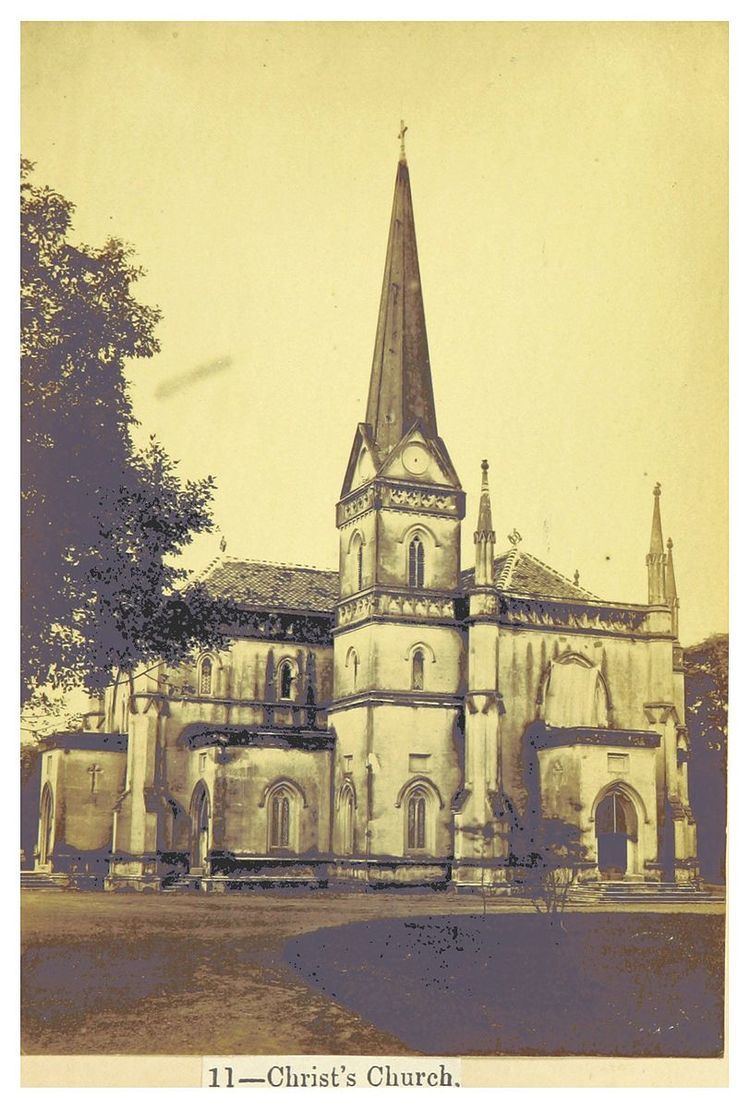Affiliation Christianity Completed 1860 Capacity 130 Year consecrated 1860 | Status Active Opened 1860 | |
 | ||
Christ Church is a historical building and a school located in the Hazratganj area of Lucknow, India. It is the first English church in Northern India and the third in the country.
Contents
History
The British built their first church in India at Madras (Chennai) in 1680, (it was also named St. Mary's Church), followed by another built in Calcutta in 1770, the St. John's Church. With 1810 as the year of construction of St. Mary's Church in the British Residency, Lucknow naturally becomes the third city, as no other English church was built between 1770 and 1819. The church was under fire from the rebels (freedom fighters), the heaviest of which were on 31 July – 5 August 1857. The British were besieged and used the church as a store-house for ghee. At one stage they seriously considered blowing up the church but gave up the idea to save expenditure of gunpowder, which was scarce.
The garden of the church was converted into a cemetery. The first to be buried there were victims of the surprise attack by the rebels at Mandiaon cantonment on 30 May 1857.
In 1860, Christ Church, situated towards the east of G.P.O. in Hazratganj, was built as a memorial to the dead of the Mutiny for their unparalleled bravery, it was originally known as the Church of England and was designed by General Hutchinson. It has the characteristic plan of construction in the form of a cross - the symbol of Christ's sacrifice for mankind. The transepts on the two sides of the nave symbolise the arms while chancel represents ihe head.
Architecture
The church was built in the Gothic style with twenty steeples on its top, the church had a cross mounted over the entrance on the north. It had a capacity of a hundred and thirty persons. The interior walls of the church still retain a large number of marble tablets and polished brass plaques erected in the memory of the British army officers, civilians and clergy that died during the conflict. One marble tablet in the transept is dedicated to James Grant Thomson, Deputy Commissioner of Muhamadee, who was 'murdered by the mutineers at Aurangabad in Oudh, 5 June,h 1857' according to the inscription. Another is dedicated to Revered Henry Polehampton. The church was enlarged and improved in 1904. A belfry appears attached to the transept on the south. The bell tower has a spire pointing towards the sky with a cross at the pinnacle. The cross is reported to have twisted due to an earthquake in 1933. The church contains stained glass trip-tych murals representing the iconic figures of the Christian faith.
The larger spire provides the background for the altar on the east while the comparatively smaller one appears on the west, above the main entrance. Both the three paneled murals have painted figures framed within intersecting arches crowning the main painting.
College
Today, the Christ Church also functions as a college. It is affiliated to the Council for the Indian School Certificate Examinations. Christ Church College, which was originally a tiny Anglo Indian School, was founded in 1878 by Mr. H. McConoghey with only two students at Cantonment Road, Lucknow. The School was registered under the name of Christ Church McConoghey School Society, Lucknow under the societies Registration Act XXI of 1860 and governed by the Diocese of Lucknow C.N.I. having its head office at 25 M.G. Road, Allahabad.
The foundation stone of Christ Church College at the present site was laid on 31 January 1939 by Lady Haig. For many years this school was only up to class VIII and in 1967 it had become an intermediate college.
In 1960 a new building was added which was opened by the Lord Bishop of Lucknow. Physics, Chemistry and Biology Laboratories were set up and in 1972 under the administration of Mr. J.M. Ledlie the Principal’s Residence was constructed within the College Premises. The Din Dayal Auditorium and the Administrative Block were constructed during the Principalship of Mr. J.M. Ledlie and were declared open by the then Governor of U.P. Dr. M. Chenna Reddy on 24 February 1975 and dedicated by the Rt. Rev. Din Dayal Bishop of Lucknow. The College was also affiliated to the Council for the Indian School Certificate Examinations, New Delhi in 1975.
In 1996 the foundation stone of a new block was laid by Rt. Rev. A.R. Stephen Bishop of Diocese Lucknow C.N.I. and Prayed upon by late Rev. A.C.V. Russell. The building consisting of four floors with eight rooms on each floor was dedicated to late Rev. A.R. Yusuf by the Chairman of the Managing Committee Rt. Rev. A.R. Stephen Bishop of Diocese of Lucknow C.N.I.
A Mini Stadium with a lush green field was inaugurated by the Chairman of the Managing Committee Rt. Rev. A.R. Strephen The College is now a full-fledged Anglo Indian European Co-educational College Catering to the needs of 2500 students.
